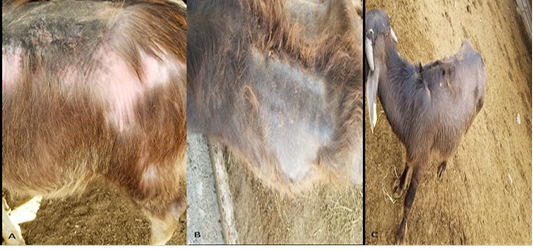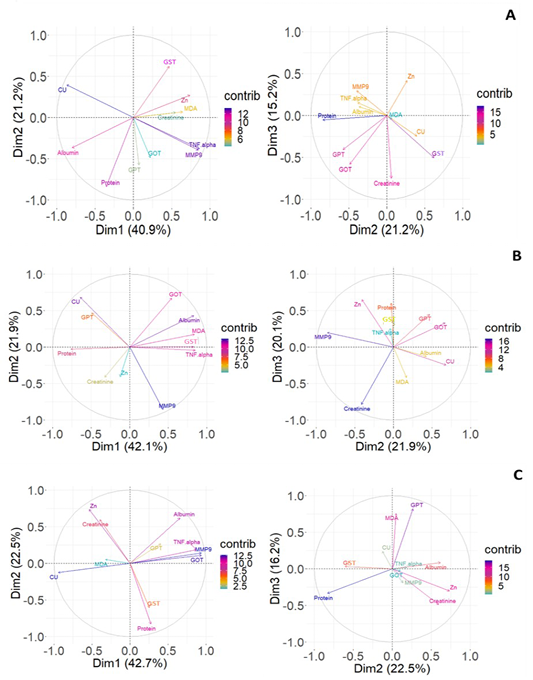Mineral Supplementation in Diseased Buffalo Calves and Impact on Health, Behavior, and Clinical Blood Profiles
Mineral Supplementation in Diseased Buffalo Calves and Impact on Health, Behavior, and Clinical Blood Profiles
Walaa I. Mohameden1, Haidy G. Abdel-Rahman2, Ibrahim M. Hegab3*
Skin lesion in buffalo calves under study. (A) Alopecia, loss of pigmentation, and excessive keratinization on the dorsum of animals at D0. (B) Skin is pigmented and hair started to grow on animals at D30. (C) Skin is completely cured and all alopecic areas are covered with hair at D60.
Principal component (PC) biplot for PC1 (Dim1), PC2 (Dim2), and PC3 (Dim3) of plasma biochemical parameters in buffalo calves. (A) At D0. (B) At 30 days post-supplementation. (C) At 60 days post-supplementation.









